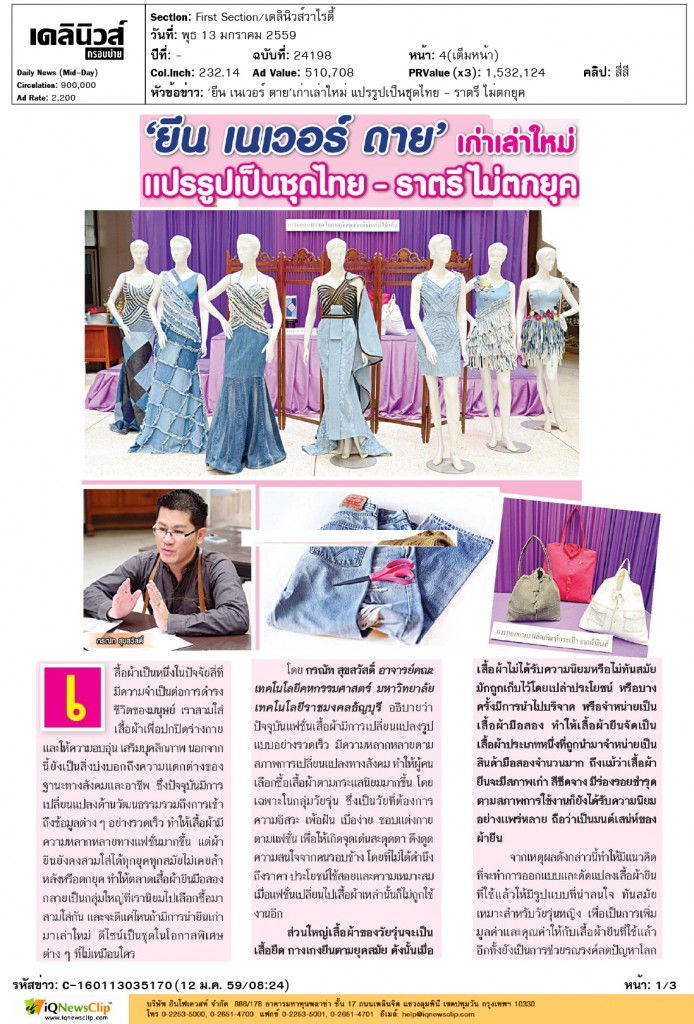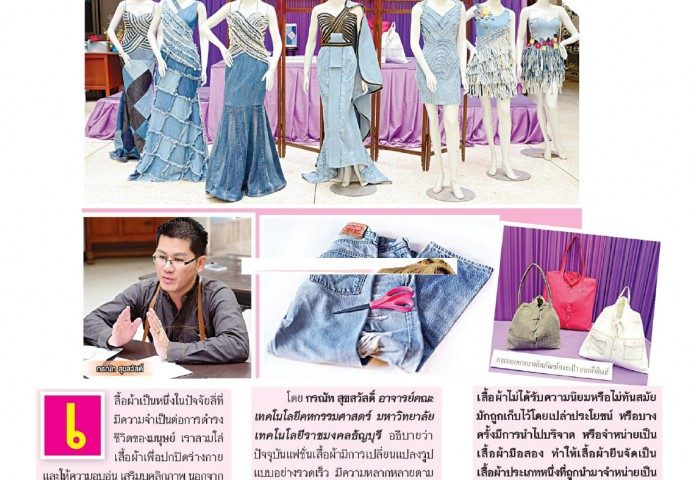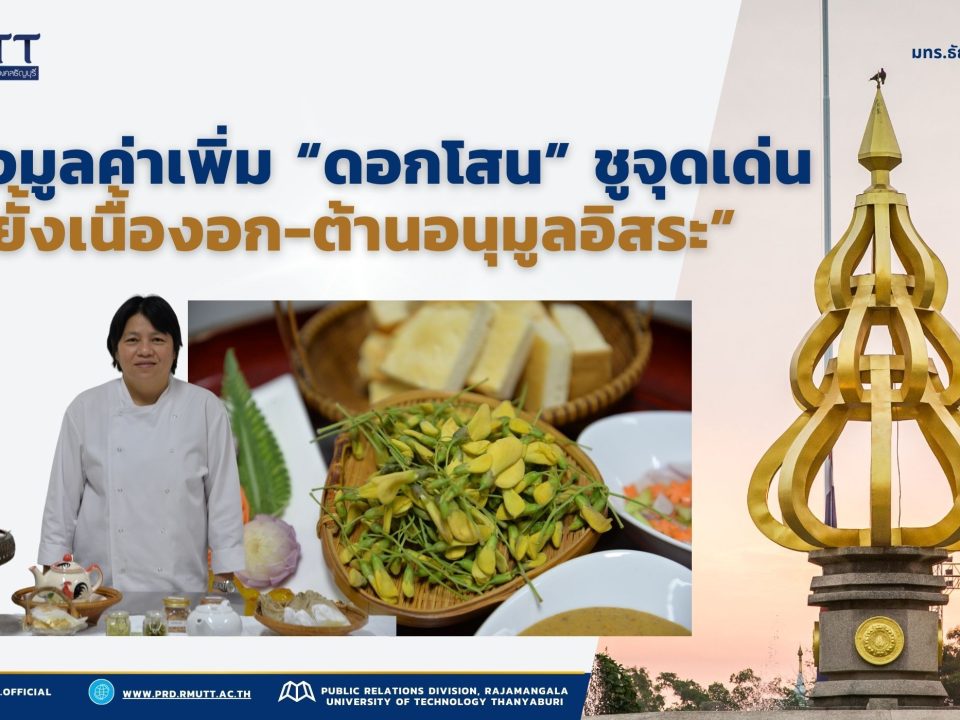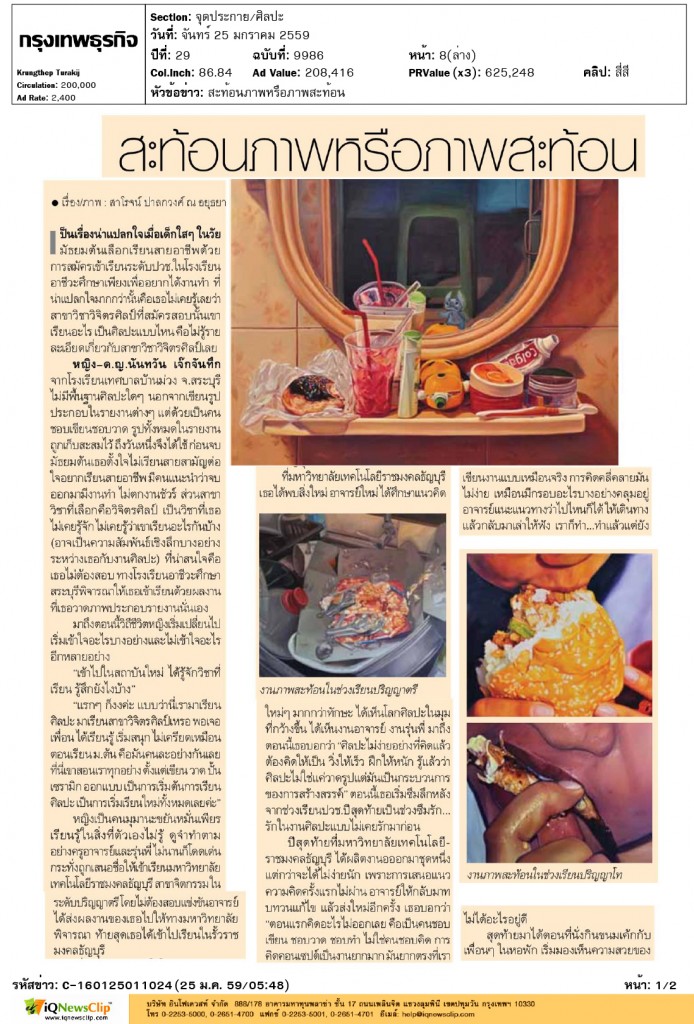
Reflection
19/06/2016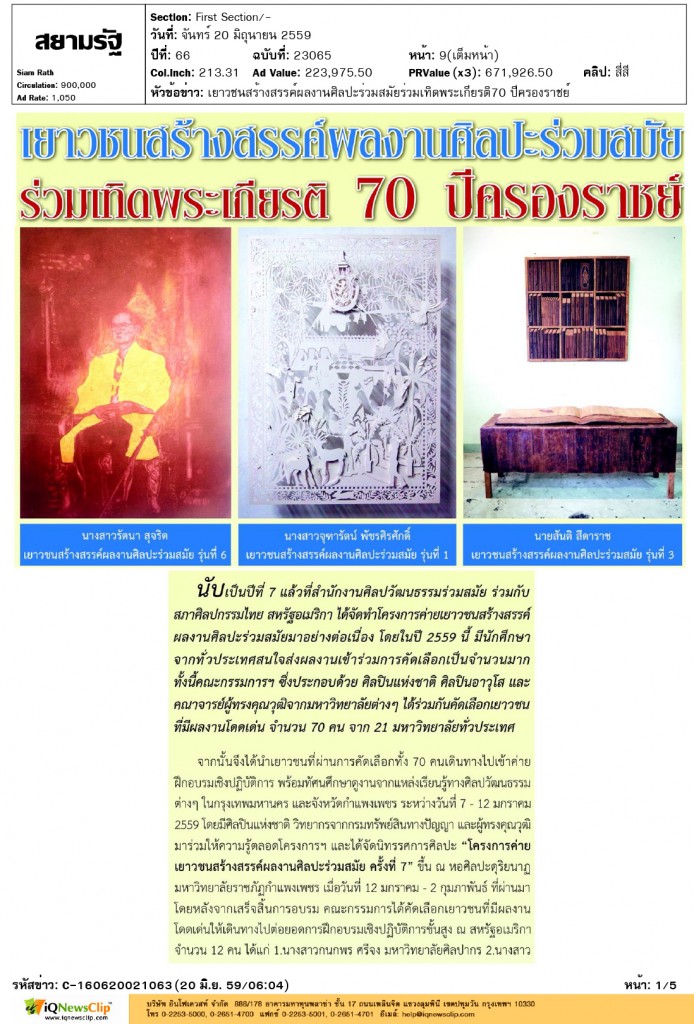
Young Artists Create Contemporary Art to Celebrate the 70th Anniversary Celebrations of His Majesty King Bhumibol Adulyadej’s Accession to the Throne
21/06/2016Clothing is one of the four basic needs imperative for survival as we wear clothes to cover our body and keep us warm. It also enhances our personality and indicates our social and professional statuses. Currently, there is a change of culture and swift access to various sources of information, which leads to creating more fashionable clothes. However, denim is still worn regardless of fashion trends and is never outdated or obsolete, resulting in a large secondhand denim market where many people buy jeans from. Wouldn’t it be nice if we could find a way to use old jeans in a new way, such as designing gowns for special events or occasions?
Prof. Kolanut Suksawat from the Faculty of Home Economics at RMUTT explained that today’s fashion is rapidly changing according to society, which makes consumers, especially teenagers, buy clothes based on popularity. Teenagers crave freedom and are easily bored, so clothes are an outlet for them to attention and stand out from those around them. Teenagers also select clothes regardless of the price, purposefulness, and appropriateness, and when the fashion changes, the clothes would not be worn again.
Most teenagers usually wear t-shirts and jeans, so when those clothes are not popular anymore or are not fashionable, they will be donated to others or be sold to secondhand markets. Denim is often sold in secondhand markets and are still widely popular even though they are of old condition, faded, or are damaged due to usage – a charm of denim.
Due to the above reasons, Prof. Kolanut decided to design and modify used jeans so they become more interesting, modern, and attractive to young teenagers, in order to increase the value of used jeans, help reduce global warming, and decrease costs of living in terms of clothing costs. He started his research by studying the behavior of people who buy used clothes.
The research consisted of modifying how to design and sew evening gowns for special occasions by using two used denim shirts, two denim skirts, and two jeans. Findings from studying the behavior of a total of 100 RMUTT female professors and faculty that buy used clothes revealed that 66.9% do not frequently buy clothes (4-6 months/clothes purchase), and if they do, they usually bought one or two pieces. Used denim shirts were often bought and the most likely reason was because they stood the test of time and were universal.
Nevertheless, Prof. Kolanut designed clothes from used jeans for special occasions, such as short and long shirts. Denim shirts have a collar, short sleeves, long sleeves, and shirt pockets. Thus, the shirt was designed according to the details of the denim shirt. The long evening gown focused on using the shirt helm, its unique point, to decorate the top of the shirt. The bottom consisted of cutting denim into a rectangular shape. For the short evening gown, fabric was cut diagonally and trimmed, then layered onto the shirt, and this pattern will make one look slimmer.
Next, Prof. Kolanut designed short and long skirts from denim, with a variety of colors available. Black, jeans, and faded colors were cut into a rectangular shape. For the top, denim was diagonally cut and trimmed. For short evening gowns, the bottom will be trimmed, layered on top of each other, and decorated by using parts of red and yellow denim, cut into a flower shape to adorn the waist.
To design short or long evening gowns using jeans that contain seams, zippers, and pockets, the jeans’ seams and were cut it into a striped skirt. The bottom was similar to a fish tail and the top consisted of trimming beautiful patterns. For the short evening gown, part of the jeans was trimmed and overlap each other. Flowers and leaves that decorated the middle of the shirt were made from leftovers of yellow and orange denim. From analyzing customer satisfaction, people were satisfied with all six evening gowns.
Thai style clothes have also been modified into denim, a highlight of the research that was just released this year. Colored denim and flower patterns were combined to make Thai style clothes. The main feature is that the back of the garment had a fish tail and there is a shawl draped over the shoulder. It has been tailored to become more international by using the zip to make a beautiful pattern, thus increasing the value of the garment by using leftover material that is also practical to wear.
However, in the current economy, more people are starting to buy secondhand products such as shoes and clothes because they have been cleaned, disinfected, and may be worn again. People buy secondhand products as it is seen as recycling resources, reducing global warming, and is a guide to developing new products. It is also a way to help increase revenue for communities and share knowledge about designing clothes with those that are interested. In the future, students will be able to add value by incorporating this knowledge in their professions as well. Denim will forevermore be a popular trend.
‘Innovation to build a nation for the future’
RMUTT would like to cordially invite those that are interested to “Innovation to build a nation for the future’ as part of the anniversary of the founding of the university between January 16th – 19th, 2016. The event will consist of exhibits that display academic work, innovations, and an open house, seminars, research, and competitions for academic excellence.
An exhibit from the Ministry of Science and Technology will showcase inventions pertaining to music and arts, and activities related to culture. Career training, short courses, stores that distribute student products, blue flag products, and OTOP products will also be sold. Schools or those that would like to attend the event can ask for more information by contacting Tel. 02-549-4990-4 or visiting http://www.rmutt.ac.th
“Designing and modifying used jeans into interesting and modern clothes suitable for young women is a way to add value to used jeans, reduce global warming, and reduce the cost of living in terms of clothing.”
L‘Jeans Never Die’ – Modifying Jeans into Thai Evening Gowns
